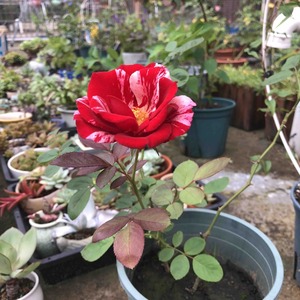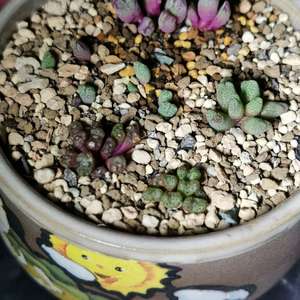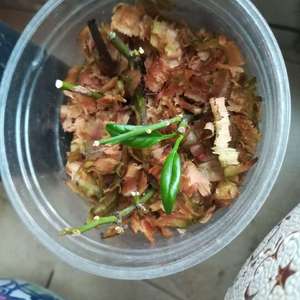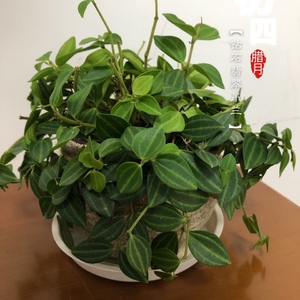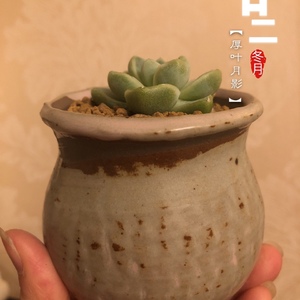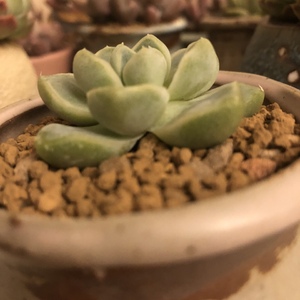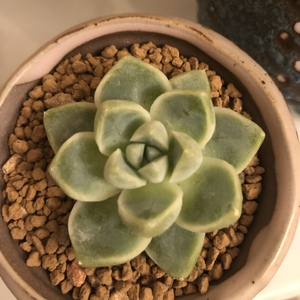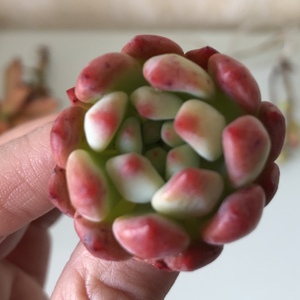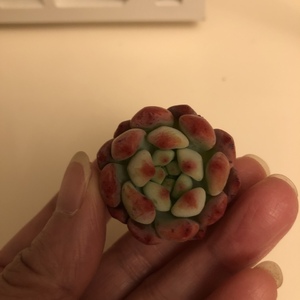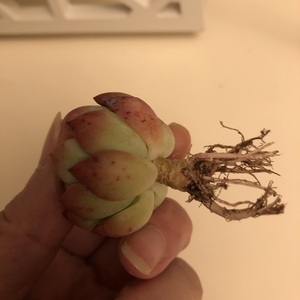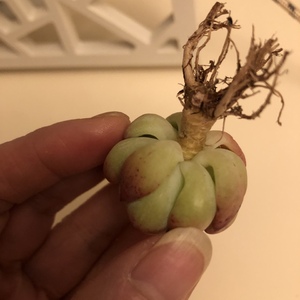
Unlocking the Potential of Limited Spaces
Container gardening is a versatile and innovative approach to gardening that unlocks the potential of limited spaces. It's ideal for urban dwellers with constrained outdoor areas. By utilizing pots, planters, and even unconventional containers, you can transform balconies, terraces, and windowsills into lush, productive green spaces.
Choosing Containers: Size, Material, and Style
The choice of containers is key to a successful container garden. Size is crucial; larger containers hold more soil and retain moisture longer, but require more space. Material choices range from plastic, which is lightweight and inexpensive, to terracotta, which is porous and great for moisture regulation. Style-wise, containers should complement both the plants and your personal aesthetic, adding to the overall appeal of your space.
Soil Selection: Tailoring to Container Needs
Unlike traditional gardening, container plants rely entirely on the soil in their pots. Opt for high-quality potting soil that ensures adequate aeration and drainage. Tailor your soil mix to your plants' specific needs—cacti and succulents, for example, thrive in a more sandy mix, while vegetables might require richer, compost-heavy soil.
Plant Selection: Considering Light and Space
Select plants based on the amount of sunlight your space receives. Full-sun plants, like tomatoes and peppers, need at least six hours of direct sunlight, while shade-tolerant plants, such as ferns and impatiens, thrive with less. Consider space constraints and the growth habit of your plants—some might grow tall or spread wide, requiring more room to flourish.
Watering Techniques: Keeping Plants Hydrated
Proper watering is critical in container gardening. Containers dry out faster than ground soil, especially in warm weather. Water plants thoroughly, allowing water to run out of the drainage holes. However, avoid overwatering, which can lead to root rot. Using self-watering containers or drip irrigation systems can help maintain consistent moisture levels.
Fertilization: Providing Essential Nutrients
Regular fertilization is necessary for container plants due to the limited nutrients available in their confined soil. Use a balanced, all-purpose fertilizer or organic options like fish emulsion or compost tea. Slow-release fertilizers can provide a steady supply of nutrients over time.
Maximizing Vertical Space: Creative Solutions
For truly small spaces, think vertically. Use wall-mounted planters, trellises, or hanging baskets to grow upwards. Vertical gardening not only saves floor space but can also create stunning living walls or privacy screens.
Pest and Disease Management: Keeping Plants Healthy
Container plants can be less prone to pests and diseases but aren’t immune. Regularly inspect for signs of trouble and act quickly if issues arise. Using natural pest control methods and removing affected leaves or plants can prevent the spread of disease.
Embracing Seasonal Change: Year-Round Interest
Plan your container garden for year-round interest. Rotate seasonal plants, incorporating evergreens or ornamental grasses for winter, and vibrant annuals or edibles for warmer months. Seasonal refreshes keep your garden interesting and dynamic.
Leveraging Community Knowledge
Connect with a community of container gardeners to exchange knowledge, seeds, and experiences. Community resources like workshops, online forums, or local gardening clubs can offer valuable support and inspiration.
Conclusion: The Joy of Container Gardening
Container gardening is a delightful and practical solution for gardening in small spaces. It allows for creativity, flexibility, and the joy of growing your own plants, irrespective of where you live. With the right approach and care, even the smallest of spaces can yield a bountiful, beautiful garden.

Introduction
Giving your kitchen a makeover doesn't have to be expensive. With a few creative ideas and clever hacks, you can transform your kitchen decor without breaking the bank. In this guide, we will explore some budget-friendly tips and tricks to help you create a stylish and updated kitchen space.
Paint or Refinish Cabinets
Instead of replacing your kitchen cabinets, consider painting or refinishing them. A fresh coat of paint can instantly update the look of your cabinets and give your kitchen a whole new vibe. Choose a color that complements your overall theme and style.
Update Cabinet Hardware
Replacing old and worn-out cabinet hardware can make a significant difference in the appearance of your kitchen. Look for affordable and stylish knobs, handles, or pulls that match your desired aesthetic. This simple change can give your cabinets a modern and updated look.
Add a Fresh Coat of Paint
Painting the walls is an inexpensive way to transform the overall look of your kitchen. Choose a color that complements your cabinets and other kitchen elements. Lighter colors can make a small kitchen appear more spacious, while bold colors can add character and personality.
Use Open Shelving
Consider removing cabinet doors and using open shelving instead. This not only creates a more open and airy feel but also allows you to display your favorite dishes and accessories. Look for affordable shelving options or repurpose existing shelves or brackets.
Update Lighting Fixtures
Replacing outdated lighting fixtures can instantly modernize your kitchen. Look for affordable options such as pendant lights or chandeliers that match your desired style. You can also consider adding under-cabinet lighting to brighten up your workspace.
Decorate with Plants
Adding some greenery to your kitchen can bring life and freshness to the space. Incorporate small potted plants or herbs on windowsills or countertops. Not only do plants add aesthetic appeal, but they also help purify the air in your kitchen.
Utilize Affordable Organizational Tools
Maximize the functionality of your kitchen by using affordable organizational tools. Invest in drawer dividers, cabinet organizers, and storage bins to keep your kitchen clutter-free. These tools can help create a clean and organized space without spending a fortune.
Create a DIY Backsplash
Enhance the visual appeal of your kitchen by creating a DIY backsplash. Use affordable materials like peel-and-stick tiles, beadboard, or even paint to add a decorative element to your kitchen walls. This budget-friendly project can instantly elevate the look of your kitchen.
Display Affordable Artwork
Add personality and style to your kitchen by displaying affordable artwork. Look for budget-friendly prints or create your own artwork using frames and printable designs. Artwork can add color and visual interest to your kitchen walls.
Rearrange and Declutter
Sometimes, a fresh look can be achieved by simply rearranging your kitchen layout and decluttering. Consider moving furniture or appliances to create a more functional space. Declutter countertops, cabinets, and drawers to create a clean and streamlined look.
Conclusion
Updating your kitchen decor on a budget is possible with a little creativity and resourcefulness. By incorporating these budget-friendly tips, such as painting cabinets, updating hardware, and adding personal touches, you can transform your kitchen into a stylish and inviting space. Remember, it's all about making small changes and maximizing the potential of what you already have. With a little effort and planning, you can achieve a beautiful kitchen makeover without breaking the bank.

Introduction
Planning for retirement is essential to ensure financial security and a comfortable lifestyle in your later years. Long-term financial planning for retirement involves setting goals, creating a strategy, and consistently saving and investing. In this article, we will discuss tips for saving for retirement and effective long-term financial planning.
Determine Your Retirement Goals
Start by determining your retirement goals. Consider factors such as the lifestyle you want to maintain, the age at which you plan to retire, and any specific activities or expenses you anticipate.
Start Early
Time is a valuable asset when saving for retirement. The earlier you start saving, the more time your investments have to grow. Take advantage of compound interest and the power of long-term investing by starting as soon as possible.
Maximize Contributions to Retirement Accounts
Contribute the maximum amount allowed to retirement accounts such as 401(k)s, IRAs, or Roth IRAs. Take advantage of any employer matching contributions to maximize your savings potential.
Diversify Your Investments
Diversify your retirement portfolio by investing in a mix of asset classes, including stocks, bonds, and real estate. Diversification helps spread risk and can potentially enhance returns.
Rebalance Your Portfolio
Regularly review and rebalance your retirement portfolio to ensure it aligns with your risk tolerance and goals. Rebalancing involves selling overperforming assets and buying underperforming ones to maintain the desired asset allocation.
Consider a Health Savings Account (HSA)
If eligible, contribute to a Health Savings Account (HSA). HSAs offer tax advantages and can be used to save for medical expenses both before and during retirement.
Educate Yourself
Stay informed about retirement planning strategies, investment options, and tax implications. Attend seminars, read books, and consult with financial advisors to make informed decisions.
Adjust Your Savings as Needed
Life circumstances may change, such as marriage, having children, or unexpected expenses. Regularly review and adjust your retirement savings plan to accommodate these changes.
Control Spending and Debt
Control your spending habits and avoid unnecessary debt. Pay off high-interest debts as soon as possible to free up more funds for retirement savings.
Seek Professional Advice
Consider consulting with a financial advisor who specializes in retirement planning. They can help create a personalized plan based on your goals, risk tolerance, and financial situation.
Conclusion
Saving for retirement requires a long-term financial plan and consistent effort. By determining your retirement goals, starting early, maximizing contributions to retirement accounts, diversifying investments, rebalancing your portfolio, considering HSAs, educating yourself, adjusting savings as needed, controlling spending and debt, and seeking professional advice, you can build a strong foundation for a financially secure retirement.

Introduction
In the world of investing, the stock market emerges as a compelling theater of opportunities and challenges. Its capricious nature, marked by peaks and troughs, calls for an adept understanding and nimble strategies. Investors, armed with insights and equipped with tools, find themselves in a dance with volatility, where each step is both an art and a science. This expanded guide dives deeper into the multifaceted universe of the stock market, offering enriched insights and refined strategies to turn volatility into an ally in the wealth-building journey.The Nature of Stock Market Volatility
Volatility, a constant companion in the stock market, is engendered by a confluence of factors. Economic indicators, corporate earnings reports, geopolitical developments, and even speculative sentiments, all weave the complex tapestry of stock price movements. Mastering the dance with volatility begins with understanding its rhythms – recognizing that the market’s ebbs and flows are opportunities for strategic actions and informed decisions.Strategies for Market Upswings
Market upswings, characterized by rising stock prices and optimistic sentiments, are arenas of opportunity but also caution. Here, the temptation of rapid gains is balanced by the wisdom of informed investing. Diversification emerges as a cornerstone, where investments are spread across sectors and asset classes to mitigate risks and optimize potential returns. Embracing a long-term perspective and grounding decisions in fundamental analysis ensures that investments are robust, sustainable, and insulated from the whims of speculative trading.The Investor’s Toolkit in Bull Markets
In bull markets, where optimism reigns, the investor’s toolkit is marked by selectivity, analysis, and strategic allocation. Analytical tools that offer insights into corporate financial health, market trends, and economic indicators become essential. Additionally, an orientation towards value investing – targeting stocks with intrinsic values that are not yet fully recognized by the market – can optimize returns during market upswings.Tactics for Market Downturns
When the market plunges into a downturn, the astute investor sees a canvas of opportunities. Dollar-cost averaging becomes a pragmatic approach, smoothing out the purchase price over time and mitigating the impact of short-term volatility. Focusing on blue-chip and dividend-paying stocks offers a semblance of stability. These are companies with established market positions, robust financials, and a history of weathering market storms, making them resilient anchors in turbulent times.Resilience in Bear Markets
Bear markets, characterized by pervasive pessimism and falling stock prices, are not for the faint-hearted. Yet, for the informed investor, they are landscapes of opportunity. Here, the focus shifts to companies with strong fundamentals, low debt levels, and sustainable business models. Portfolio rebalancing becomes pivotal – adjusting asset allocations to maintain the desired risk-return profile, ensuring that the portfolio is aligned with long-term financial objectives.The Role of Emotional Discipline
In the oscillating waves of the stock market, emotional discipline emerges as a bastion of strength. Emotional responses can precipitate impulsive decisions, often leading to sub-optimal outcomes. Cultivating a temperament marked by patience, objectivity, and resilience ensures that investment decisions are anchored in strategy and analysis, insulated from the transient storms of market sentiments.Utilizing Technological Tools
As we delve deeper into the digital age, technology stands as a formidable ally for the modern investor. Algorithmic trading, artificial intelligence, and machine learning are not just buzzwords but essential components of the informed investor’s arsenal. They enhance predictive accuracy, optimize trading strategies, and offer real-time insights into market trends, enabling investors to make decisions that are both timely and informed.Risk Management Essentials
In the nuanced world of stock market investing, risk management is the linchpin that holds the portfolio together. It is an intricate dance of diversifying assets, setting and adhering to stop-loss orders, and continuously monitoring the portfolio against the backdrop of evolving market landscapes. It’s about ensuring that each investment, each asset allocation, is a cog in the well-oiled machine geared towards achieving specified financial objectives.Conclusion
Navigating the stock market’s undulating terrains is an art that combines knowledge, strategy, and emotional equanimity. In the dynamic interplay of market forces, opportunities, and challenges, the informed investor emerges not just as a passive observer but as an adept navigator. Each strategy employed, insight garnered, and decision made, is a brushstroke in the masterpiece of wealth creation and financial prosperity. In this expanded narrative, the stock market’s ups and downs are not just inevitable phenomena but orchestrated pathways leading to financial enlightenment and empowerment.
Introduction
Interest rates are a fundamental concept in the world of finance, influencing everything from the cost of borrowing to the return on your investments. Whether you're taking out a loan, saving for retirement, or simply trying to grow your wealth, understanding interest rates is essential. In this article, we will delve into the intricacies of interest rates, exploring how they impact your financial decisions and shape the economy.
Types of Interest Rates
Interest rates come in various forms, each with its unique implications. The two primary categories are:
Nominal Interest Rate
The nominal interest rate, also known as the stated or coupon rate, is the rate set by the lender or issuer of a financial product. For instance, when you take out a loan, the nominal interest rate represents the percentage of the loan amount that you must pay as interest over a specific period. It does not consider the effects of inflation or compounding.
Real Interest Rate
The real interest rate accounts for inflation, providing a more accurate picture of the true cost of borrowing or the actual return on an investment. In order to calculate the real interest rate, you can simply subtract the inflation rate from the nominal interest rate. A higher real interest rate means your money's purchasing power will grow, whereas a negative real rate suggests a decrease in purchasing power.
Impact on Loans
Borrowing Costs
Interest rates significantly affect the cost of borrowing. When interest rates are low, loans become more affordable as you pay less in interest. Conversely, when rates are high, borrowing becomes expensive. Understanding this relationship is crucial when considering taking out mortgages, car loans, or personal loans.
Fixed vs. Variable Rates
Loans can have either fixed or variable interest rates. Fixed rates remain constant throughout the loan term, offering predictability but potentially locking you into higher rates if market rates decrease. Variable rates, on the other hand, fluctuate with market conditions, providing the opportunity to benefit from lower rates but carrying the risk of increased payments if rates rise.
Impact on Mortgage Loans
Mortgages are particularly sensitive to interest rate fluctuations. When rates drop, homeowners can refinance their mortgages to secure lower monthly payments. Conversely, rising rates can lead to higher mortgage costs, potentially impacting housing affordability.
Influence on Investments
Bond Investments
Bonds are debt securities with fixed interest payments. The relationship between interest rates and bond prices is inverse: when rates rise, bond prices fall, and vice versa. Therefore, if you own bonds, be aware of how changing interest rates can affect the value of your investment.
Stock Market
Interest rates can indirectly impact stock prices. When rates are low, investors may seek higher returns in the stock market, leading to increased demand for stocks and potentially driving prices higher. Conversely, rising interest rates can make fixed-income investments more appealing, potentially reducing stock market demand and causing prices to drop.
Savings and Investments
When you save or invest money, interest rates determine how fast your money grows. Higher rates typically lead to more significant returns on savings accounts, certificates of deposit (CDs), and other fixed-income investments. Low rates, however, may necessitate a shift towards riskier assets to achieve higher returns.
Central Banks and the Economy
Monetary Policy
Central banks, such as the Federal Reserve in the United States, use interest rates as a tool to influence the broader economy. Lowering rates can stimulate borrowing and spending, encouraging economic growth. Conversely, raising rates can cool down an overheating economy and control inflation.
Inflation
Interest rates play a pivotal role in managing inflation. When inflation is high, central banks often raise rates to reduce spending and curb rising prices. Conversely, in periods of low inflation or deflation, they may lower rates to encourage spending and investment.
Conclusion
Interest rates are the financial heartbeat of our modern economy, influencing every facet of our financial lives. Whether you're looking to secure a loan, grow your investments, or understand broader economic trends, a solid grasp of interest rates is essential. By recognizing how they impact loans, investments, and the overall economy, you can make informed financial decisions and navigate the complex world of finance more effectively.

Bloating is a difficult (and annoying) problem that many individuals have, and although it may be caused by a variety of dietary factors, hormones may also play a role, particularly in menopausal women. It's no secret that your body moves and changes throughout time, but why does menopause affect bloating?
We feel that determining the main cause is critical, therefore we investigated what precisely menopausal bloat is and what you can do to find relief and rejuvenate comfort in your body.
What causes bloating in the abdomen during menopause?
The two principal female sex hormones are estrogen and progesterone, and their levels change as you approach menopause, which may trigger certain unfavorable effects in your body. "Too little or too much progesterone may certainly cause a woman to feel bloated," says Wendie Trubow, M.D., a functional medicine expert. "Typically, once a woman enters menopause, it is due to a lack of progesterone, thus we suggest evaluating the levels."These hormonal alterations might have a direct impact on your health. "At first, the decrease and stoppage of ovulation results in a drop of progesterone, followed by variations in estrogen levels and, finally, a reduction of estrogen below the threshold required for menstruation," says holistic OBGYN Eden Fromberg, DO. "By definition, menopause is the cessation of menstruation for a complete year, accompanied by certain hormonal alterations."
The body may retain more fluid than normal at this period, resulting in menopausal bloating. As a result, targeting fluid retention in particular might be beneficial in easing these changes inside your body.
Menopause belly bloat remedies
One of the greatest strategies to reduce belly bloat during menopause is to target fluid retention, and there are various approaches you may utilize to do so. Consider the following if you've been experiencing menopausal tummy bloat:1. Consuming lots of water
If your body is retaining water, it may be an indication that you need to drink more, not less. "Adequate fluid intake is crucial, and reducing fluid consumption does not address fluid retention," says Fromberg. "Restricting fluids, in fact, decreases regularity, which is another factor to bloating."2. Incorporating a mindful eating strategy
As previously said, your diet has a significant influence on bloating, even outside of menopause, so keeping track of trigger foods might be beneficial. "Bloating may be caused by processed foods, cold foods, gas-producing foods, greasy meals, gluten, and foods containing sugar, sweets, and refined carbs," says Fromberg. "The gut microbiome is made up of immune-sensitive organisms that line our small and large intestines, and these vital microorganisms are particularly sensitive to sugar, sweets, and processed carbs."Cut down on sweets and processed snack foods and replace them with probiotic-rich items like live culture yogurt, fermented foods like kimchi, and even sauerkraut.
3. Consuming a probiotic
Aside from eating probiotic-rich foods, taking a tailored supplement is another way to provide your stomach with what it requires.4. Stress management
Of course, stress may contribute to bloating, and controlling emotions of overload in your daily life will have an impact on your general health. "The ovaries get their blood and nerve supply from the adrenal glands, and these endocrine organs are both hormonally and physically sensitive to each other's activities," explains Fromberg, explaining how stress and menopause are linked. "With the start of menopause, the adrenals may become more stress sensitive due to the ovaries' lack of support."Regular exercise, healthy sleep, breathwork, and giving yourself time to relax and recuperate are all fantastic ways to relieve stress and promote your general well-being.
When to consult a doctor
While occasional bloating is typical, if it isn't responding to healthy lifestyle changes, Fromberg advises consulting with a health care expert to determine if there is a better course of treatment.The main point
Menopause is already a significant shift in your body, so it's reasonable to be annoyed by newly appearing bloat. However, being aware of your gut health may help you feel more at ease in your body and improve general well-being. It's vital to remember that treating your health holistically is the greatest way to feel wonderful.
These plants are excellent choices for planting in suburban or urban areas. Due to its compact size, it is a great choice for gardens and lawns. It may also be used into a landscaping strategy for businesses. Additionally, this cultivar has increased resilience to powdery mildew, which certain crape myrtle plants often struggle with.
Name of the plant: Lagerstroemia x "Acoma"
Name of the plant: Lagerstroemia x "Acoma"
Plant Type Common Name Acoma Crape Myrtle 2 to 10 feet tall and 2 to 10 feet broad when fully grown
UV Radiation whole sun
Type of Soil Well-draining
pH of the Soil: Acidic to Neutral
Bloom Seasons Spring and summer
White Flower Hardiness Zones 7 to 9 Native Country Australia and Asia
How to Grow Crape Myrtle in Acoma
The cultivation of the Acoma crape myrtle is gratifying since it yields weeping branches covered in rich foliage and lovely blossoms. Although this cultivar needs a lot of sun, it thrives in a range of soil types and only need little water or fertilizer.
These trees are expected to grow at a medium pace, so you'll have plenty of time to observe their development. Just keep in mind that there won't be much more for you to do than observe; the Acoma crepe myrtle just needs its bottom branches sometimes pruned.
Light
Crape myrtle needs full light to flourish to its greatest capacity. Crape myrtles are well recognized for their stunning flowers, so to get the most out of the blossoming show, make sure they get at least six hours of light each day.
Soil The crape myrtle may grow in a variety of soil types, such as loam, clay, or sandy soils as long as the area has good drainage. These plants may thrive on slightly alkaline or slightly acidic soils, although they prefer slightly acidic to neutral pH values.
When the crape myrtle is initially planted, it has to be watered often until it becomes established. Once they reach maturity, however, these plants have little water requirements and may survive on about an inch of water per week.
Although they have shown to be comparatively drought-resistant, remember that a lack of water during bloom season may lead to a less impressive display. If you endure a prolonged dry spell and you don't want your flower output to suffer, try to supplement rainfall with routine watering.
Thermodynamics and Humidity
The Acoma crape myrtle thrives well even in hot areas and is tolerant of humidity or drought, like other crape myrtle kinds that flourish in the sun and heat.
On the other hand, it can often effectively resist temperatures as low as zero degrees Fahrenheit and is hardy in USDA zones 7 to 9.
Fertilizer
You may need to fertilize your crape myrtle to get the greatest blooms. Even while these plants may thrive in low-nutrient soil, they nevertheless need enough nitrogen to maintain bloom development.
Consider fertilizing your Acoma crape myrtle using a balanced formula, such as an 8-8-8 or 10-10-10, if your soil is deficient. The fertilizer may be administered at the beginning of the growth season and should be spread as soon as it rains, unless appropriate watering is provided subsequently.
While the proper quantity of fertilizer may bring out your crape myrtle's greatest qualities, an excessive amount might have the opposite effect. Don't overfeed your plants with fertilizers; doing so might result in excessive leaf growth and fewer blooms.
Acoma Crape Myrtle growth
Cuttings are the most effective method of propagating Acoma crape myrtle. Along with root cuttings, you may also employ soft or hardwood cuttings.
To reproduce from cuttings, use the following actions:
To remove hardwood or softwood cuts, use clean scissors or garden shears. Cuttings from hardwood should be roughly eight inches long. Once the tree has gone dormant for the year, usually in the late autumn, take hardwood cuttings. Softwood cuttings should grow around six inches long and have many nodes when they are taken in the spring or summer.
Leave approximately an inch of the cutting above the soil line when planting the cutting in a container filled with good potting soil.
Keep the soil wet, and place the container where it will get lots of sun. In approximately a month, softwood cuttings should start to grow again. Although they will develop more slowly, hardwood cuttings won't be ready for planting until the summer.
The cutting may be placed outside after it has established roots and begun to generate new growth. Place your new plant in an area with plenty of light and give it plenty of water.
Acoma Crape Myrtle toxicity
You may relax knowing that this tree will not hurt your dogs or other animals if you're worried about them nibbling on your crape myrtle. The Acoma crape myrtle is safe for both people and animals to consume.
Pruning
Light pruning may keep your Acoma crape myrtle looking excellent; it's best to do this in the spring before the heavy foliage covers the branches.
It won't need substantial pruning to maintain its height since this hybrid type is renowned for having a tiny shape, but you could wish to tidy up low branches to highlight the tree's lovely red-and-white smooth bark.
Additionally, pinching off new growth will urge your crape myrtle to grow fuller and bushier rather than higher, which will stimulate the tree to develop more branches. Remove wasted blooms as well to encourage more blossoming.
Typical Pests
One benefit of this hybrid species is greater resistance to powdery mildew, a disease that often affects crepe myrtle trees. Aphid infestation is still a problem for Acoma trees. This may result in a black mold, but it won't really endanger or harm the tree.

Consider fertilizer as your potting soil's second half. Your plants won't require much, if any, fertilizer while the potting soil is new. This is particularly true of contemporary potting soils that have been strengthened with additives like fertilizer. But after around two months, the plant will have used all the soil's nutrients, so you'll need to fertilize if you want it to keep growing healthily.
Different Fertilizers
There are many various types of fertilizers, including liquids, sticks, pills, granules, and slow-release formulations. Liquid and slow-release fertilizers are the two that are most appropriate for indoor application. Granules and sticks may be more handy, but they don't do a good job of distributing nutrients throughout the soil, and after you've put a fertilizer stick into your pot, you have no control over how much of it will be released. Granular fertilizers are intended to be used outside.
Implement liquid fertilizer
Using a watering can, liquid fertilizers are administered after being diluted in water. You could fertilize every time you water or every other time, depending on the label's directions. The frequency will also depend on the kind of plant, since some—especially those with showy huge blooms—might need to be fed more often. Always do your study on the nutritional requirements of plants to understand what they need. You can carefully manage the amount of nutrients that are continuously supplied via liquid fertilizer. For instance, it is simple to stop feeding the plant during the winter months when it is dormant and to start feeding more when it begins to sprout new growth. The drawback is that you have to remember to do it each time.
Attempt slow-releasing fertilizer.
For both indoor and outdoor plants, these products have quickly emerged as many gardeners' and professional growers' favorites. The time-release shells on slow-release fertilizers are designed to slowly release nutrients into the soil. Because each pellet has a coating with a different thickness that dissolves at a different rate, the fertilizer is actually released gradually over time. Between four and nine months might pass between applications. The main disadvantage is that slow-release fertilizer is more expensive, but because it lasts so long, the cost is offset.
Utilize fertilizer granules.
You may manually incorporate dry, pure fertilizer pellets into the potting soil. They can be used for indoor containers, despite being more frequently used in outdoor gardens, though it can be challenging. Granular fertilizer is difficult to control because it releases all of its nutrients simultaneously when the pot is watered. Although fairly affordable, this kind of fertilizer is not a good option for feeding indoor plants.
Advice on Purchasing Fertilizer
The fundamental macronutrients that plants require to grow, such as nitrogen, phosphorus, and potassium, are present in all general-purpose fertilizers. Each macronutrient serves a certain purpose:
Nitrogen promotes the development of healthy foliage.
The element phosphorus promotes larger, healthier flowers.
Potassium promotes a robust internal system.
African violet fertilizers are one example of a specialty fertilizer that has these nutrients in optimized ratios for a specific plant type.
Better-quality fertilizers contain micronutrients like boron, magnesium, and manganese that will promote healthier growth in addition to these macronutrients. Check the fertilizer's label to see what nutrients are present.





